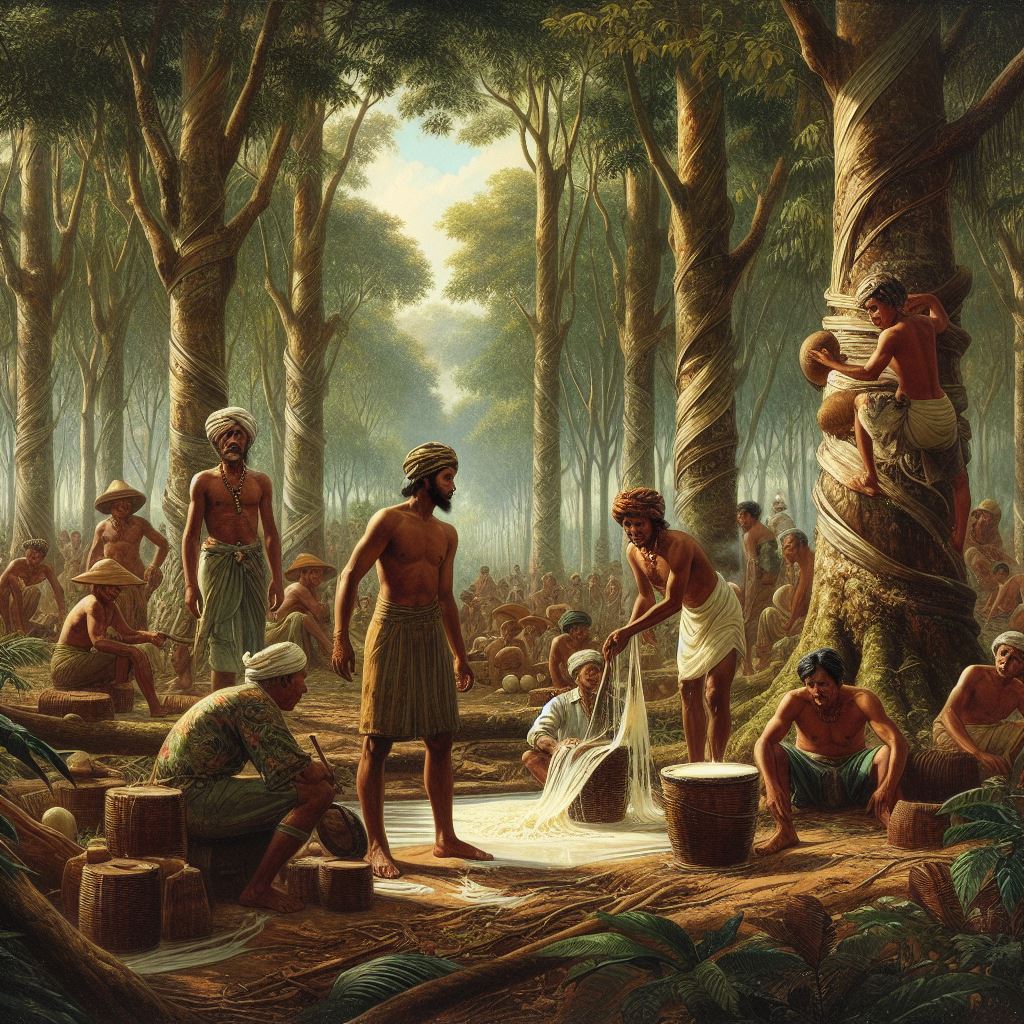The discovery of rubber traces its roots back to ancient civilizations, but its transformation into a versatile material owes much to centuries of experimentation and innovation. From its humble beginnings as a natural sap to the modern rubber industry, the story of rubber is a testament to human ingenuity and perseverance.
Early Uses of Rubber
Rubber’s history can be traced back to Mesoamerican civilizations, where indigenous peoples such as the Olmec, Maya, and Aztec cultures utilized the latex sap of the Hevea brasiliensis tree for various purposes. They discovered that the latex could be harvested from the trees and processed into balls for sports, waterproofing materials, and footwear.
European Encounter
Rubber remained relatively unknown to Europeans until the Age of Exploration. In the 16th century, Spanish explorers encountered indigenous peoples in Central and South America using rubber for various purposes. They brought samples of rubber back to Europe, where it piqued the interest of scientists and inventors.
Vulcanization: A Revolutionary Discovery
The transformation of rubber from a fragile and sticky substance to a durable and elastic material came with the discovery of vulcanization. In 1839, American inventor Charles Goodyear accidentally dropped a mixture of rubber and sulfur onto a hot stove, resulting in a chemical reaction that dramatically improved the rubber’s properties. This process, known as vulcanization, made rubber more resistant to heat, cold, and abrasion, paving the way for its widespread industrial use.
Rubber Boom and Industry
The discovery of vulcanization sparked a rubber boom in the mid-19th century, particularly in regions with abundant rubber trees such as South America and Southeast Asia. Rubber plantations were established, and the demand for rubber products grew rapidly, fueling industrialization and economic growth.
Modern Applications and Innovations
Rubber’s versatility and durability have led to its use in a wide range of applications, from tires and automotive parts to footwear, industrial products, and consumer goods. The development of synthetic rubber in the early 20th century further expanded the possibilities for rubber use, reducing dependence on natural rubber sources and enabling new applications in industries such as aerospace, electronics, and healthcare.
Legacy and Impact
The discovery of rubber and its subsequent industrialization have had a profound impact on society, transforming transportation, manufacturing, and everyday life. Rubber remains an essential material in the modern world, with ongoing research and innovation continuing to expand its potential applications and improve its performance.
Conclusion
The discovery of rubber represents a convergence of ancient wisdom, scientific inquiry, and technological innovation. From its humble origins in the rainforests of Mesoamerica to its global significance in the modern economy, rubber’s journey is a testament to humanity’s ability to harness the natural world for the betterment of society.


